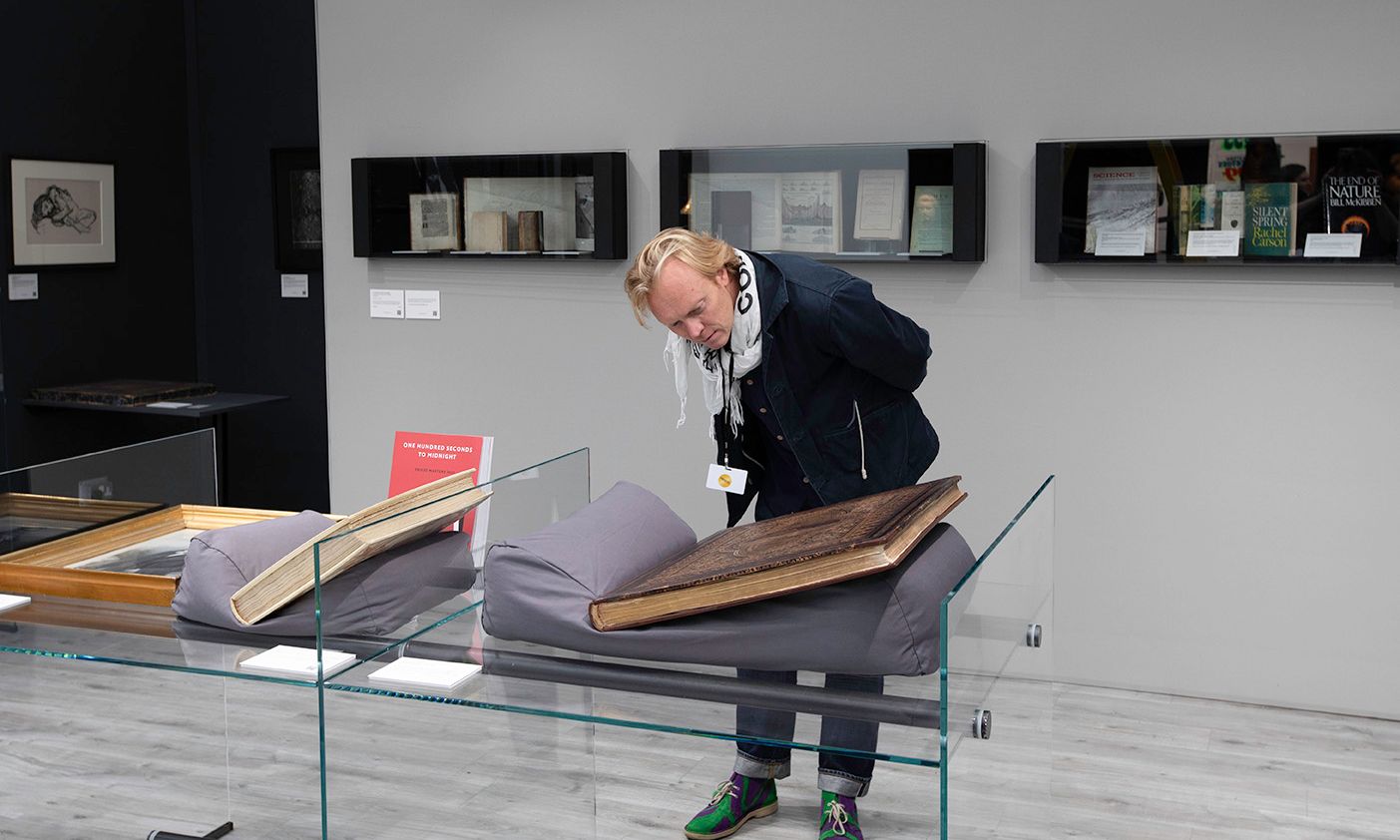The ensemble is presented both at Frieze Masters and at Peter Harrington’s Mayfair bookshop, titled One Hundred Seconds to Midnight: Sounding the Alarm for Climate Change. Image: © David Owens
A collection charting the history of climate change and environmentalism since the dawn of the printing press is being offered for £1.65m at Frieze Masters by the leading antiquarian bookseller Peter Harrington. With nearly 850 items ranging from the 15th-century to this year, it includes first-edition books, manuscripts, maps, academic journals, photographs, posters and even 1970s board games and protest badges.
The idea of assembling a comprehensive climate collection was born three years ago “when we realised there wasn’t something like it currently in existence, and we felt there really should be”, says Pom Harrington, the owner of Peter Harrington.
The undertaking required “a lot of groundwork” in researching and sourcing the texts, says rare book specialist Emma Walshe, as “it’s bringing in a huge amount of material that is quite fresh to us [in the trade]”. A further challenge was securing editions in “collector’s condition” with their original bindings and wrappers intact, Harrington adds.
The earliest item dates to 1485 and contains one of the first discussions of weather forecasting, by the French astrologer Firmin de Beauval. Walshe is still waiting for a printed copy of the latest: this year’s Intergovernmental Panel on Climate Change (IPCC) report, only available in PDF form for now.
Earthrise (1968) is on show at Peter Harrington's Frieze Masters booth © David Owens
Other highlights include Earthrise, the 1968 photo of Earth taken during Nasa’s Apollo 8 lunar orbit mission; a lithographic portrait of the German polymath Alexander Humboldt, who pioneered the concept of human-induced climate change; and artist-explorer William Bradford’s 1873 elephant folio of expedition photographs of the Arctic.
The ensemble is presented both at Frieze Masters and at Peter Harrington’s Mayfair bookshop, titled One Hundred Seconds to Midnight: Sounding the Alarm for Climate Change. The title refers to the current position of the Doomsday Clock, a symbol created in 1947 by the Bulletin of the Atomic Scientists to measure how close humanity is to the end of the world. Updated annually, the clock has been set to 100 seconds before midnight since January 2020—closer than ever before.
The goal, Harrington says, is to find a buyer willing to purchase the entire collection and lend it to an institution for public exhibition. Initial reactions before the fair have been “unanimously strong”, he says. A 10% portion of the proceeds from the sale will be donated in support of the conservation charity the World Land Trust.
We use cookies to personalise content and ads, to provide social media features and to analyse our traffic. We also share information about your use of our site with our social media, advertising and analytics partners who may combine it with other information that you’ve provided to them or that they’ve collected from your use of their services. Read our Cookie Policy for more information.

